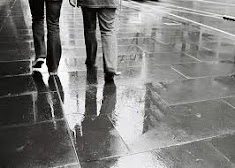 |
| Yayoi Kusama, Self-obliteration |
January 4, 2011
Starting December 27, 2010, I chose the following passage to “unpack” — line by line — as a daily practice to take me into the New Year.
And what is the “unpacking” process? It involves deep concentration on one line at a time, and then writing my response to that line – first with my dominant hand, and then with my non-dominant hand. There are plenty of references on the web to the process of dominant and non-dominant hand-writing. If you haven’t tried it, you may want to. I venture a guess that you will surprise yourself.
I’ll be interested to see what this passage has hidden for me.
Cast Aside What Limits You
— By Dov Baer of Mezherich
The human body is finite;
the spirit is boundless.
Before you begin to pray,
cast aside what limits you
and enter into the world of the Infinite.
Turn to God alone
and have no thoughts of self at all.
Nothing but God exists for you
when self has ceased to be.
Dov Baer (d. 1772) was the chief disciple and successor of Rabbi Israel ben Eliezer, the Baal Shem Tov or “Master of the Good Name,” founder of the Hasidic movement of Jewish mysticism, which places devotional prayer at the center of the spiritual life.
Right Hand:
“and have no thoughts of self at all.“
That’s what art can do – for the artist and the onlooker. The small ‘self’ merges with vast consciousness + takes form in a new language – as an expression of something infinite + instantly recognized . . . by some at least.
I’ve been using examples of the art of Yayoi Kusama – with the blog entries on January 2, 2011 and December 31, 2010. In one statement, Kusama says, “I paint polka dots on the bodies of people, and with those polka dots, the people will self-obliterate and return to the nature of the universe.” In the documentary [Yayoi Kusama, I adore myself], she says, “When I’m facing a canvas, my mind is blank. “
In the creation of the 29 Pieces, the seed came from personal experience, but then quickly merged with perennial experiences and took form in ways that far transcend one artist’s life expression. There was a merging with the vibrant wisdom of the mystics. While my ‘self’ is still part of the story, it has been left behind. For the most part. That point is frequently misunderstood, as some see an artist’s work as all about advancing one’s self. Not so. Well, not always. Sometimes, it’s about advancing Self. (Capital ‘S’.)
Left hand:
“and have no thoughts of self at all.“
We sit in our little teacup . . . and that teacup might be an apartment, church, beauty salon, bar or nation. And we think. “This is the world, and it’s my world to either manage or serve.” Well, hey, surprise. A paradox. That might be both a teensy over-statement and yet an under-appraisal of our roles. We do what we can. Some work to conduct themselves nobly. Some work to make a big, fine, well constructed teacup. Some just sit. Some lighten up + go with the flow.
But ask someone whose cup got broken (There’s been a car wreck, or maybe a child was killed.) There’s something bigger at work, something humbling and interesting, if we can arrive at a point of detachment.
And we are a tempest in a teacup.
We’re just a wave. We’re not the water.
(Thank you Jimmie Dale Gilmore.)
— Karen Blessen

0 comments:
Post a Comment